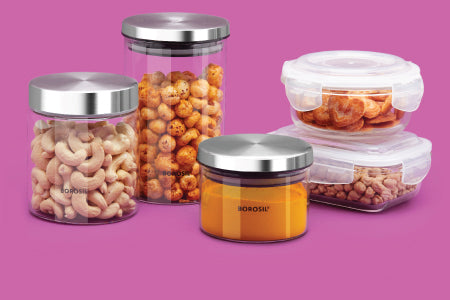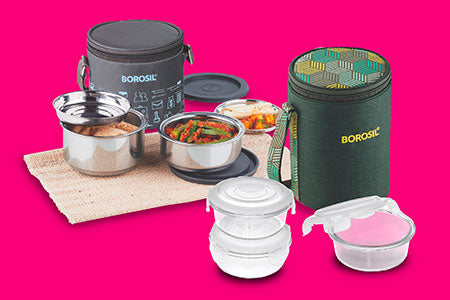
Soft And Spongy Appam Recipe
Appam Recipe: Mastering the Art of South Indian Pancakes
In the heart of South India, where the palm trees sway and the morning sun casts a golden glow, a culinary masterpiece graces breakfast tables with its delicate beauty: Appam. With its crisp, lacy periphery and tender, airy centre, this exquisite pancake has been an enchanting emblem of South Indian cuisine for generations. Its history is steeped in tradition, and its preparation is an art passed down through time. Join us as we explore the secrets of crafting the perfect Appam, from creating fragrant rice batter to achieving those mesmerising patterns during cooking.

Appam Recipe: Ingredients
Before learning to make Appam, look at the required ingredients first. It will help you cook the dish in the right way.
• 2 cups of regular rice, parboiled rice, or a combination of both.
• ½ cup of thick poha, or aval or flattened rice
• ½ a cup of freshly grated coconut
• ½ teaspoon of instant yeast. (You can use ¾ teaspoon of dry active yeast.)
• ½ teaspoon of salt, or adjust the quantity according to your taste preferences.
• 2½ tablespoons of sugar, or you can add more or less to suit your desired level of sweetness.
How to Make Appam? Step-by-Step Process
Here's the detailed Appam batter recipe you've been waiting for.
1. Rinse the rice a couple of times and soak it in water for 4 to 5 hours.
2. Drain the soaked rice and add it to a blender or mixer jar. Also, add grated coconut, cooked rice or poha (you can soak the poha separately or add it to the blender after rinsing with water), salt, and sugar.
3. Add water as needed and grind all the ingredients into a smooth, flowing batter.
4. To activate the yeast, sprinkle it over the batter and mix well. Cover the bowl and let it ferment for 1-2 hours until it doubles in volume with air pockets.
5. Dissolve it in 1-2 tablespoons of lukewarm water for dry active yeast and then add it to the batter.
6. Mix thoroughly, cover, and let it ferment overnight or for 8 to 12 hours, depending on the temperature.
7. Heat an appam pan or kadai with handles at the sides and spread some oil on it using a spoon. If you're using a nonstick pan, you can skip this step.
8. Pour a ladleful of the batter (about 1/3 to 1/4 cup) into the pan and turn and tilt the pan to spread the batter into a neat circle. Maintain medium-low to medium heat as needed.
9. Drizzle some oil on the sides of the Appam if desired. Cover the pan with a lid and let the Appam cook until the base becomes light golden with crispy edges.
10. Gently remove the cooked Appam with a wooden spoon. Make the remaining appam in the same way. If the pan becomes too hot, reduce the heat to make it easier to spread the batter.
11. Keep the prepared appams covered with a kitchen towel to keep them warm.
This recipe will serve 20 people. Enjoy it with your friends and family.
Tips to Make the Best Appam
• The batter's fermentation time may vary based on temperature. It should double in volume and develop air pockets.
• You can use either instant yeast or dry active yeast. The latter requires a longer fermentation time.
• If you want to make the batter ahead of time, it can be stored in the fridge for up to one day. Beyond that, it may turn sour.
• To prevent the appams from sticking together, layer them with parchment paper as you cook them.
• You can use various types of rice, such as regular, parboiled, or a combination.
• While fresh coconut is recommended, you can use desiccated or frozen coconut, which will slightly alter the flavour.
Vegetable Stew: Ingredients
Here are the ingredients for making vegetable stew.
• 2 tbsp coconut oil
• ½ inch cinnamon
• 3 cardamom pods
• 4 cloves
• 1 tsp pepper
• 3 tbsp peas
• 3 cloves of garlic, crushed
• 2 green chillies, slit
• 1-inch piece of ginger, finely chopped
• A few curry leaves
• 4 shallots, halved
• 1 potato, chopped
• 5 beans, chopped
• 1 carrot, chopped
• ½ capsicum, chopped
• 3 cups thin coconut milk
• 1 cup thick coconut milk
• 1 tsp salt

How to Make Vegetable Stew? Step-by-Step Process
Creating a hearty and comforting Vegetable Stew is easier than you might think. Follow this straightforward recipe to savour a warm, wholesome dish perfect for Appam.
• Heat coconut oil in a kadai.
• Add cinnamon, cardamom pods, cloves, pepper, crushed garlic cloves, slit green chillies, finely chopped ginger, curry leaves, and halved shallots.
• Sauté these ingredients until the shallots shrink slightly.
• Add chopped potato, beans, carrot, peas, capsicum, and 1 tsp salt.
• Sauté the vegetables for about 2 minutes or until they become slightly crunchy.
• Next, mix everything well with 3 cups of thin coconut milk.
• Cover the kadai and boil for about 10 minutes or until the vegetables are well-cooked.
• Now, add 1 cup of thick coconut milk and gently stir. Be careful not to boil it further after adding the thick coconut milk, as it may cause the coconut milk to split.
• Finally, you can enjoy your Appam with this delicious vegetable stew.
Conclusion
Appam is a simple dish. It tastes slightly tangy, mildly sweet and soft with a crispy edge. It goes well with coconut milk and vegetable stew. Also, Appam with coconut milk is a soft dish that melts in your mouth and feels light.
Frequently Asked Questions
How many days will Appam batter last in the fridge?
The Appam batter will last in the fridge for 2-3 days maximum.
What happens when the Appam batter is over-fermented?
Over-fermented appam batter can result in a sour taste and alter the batter's texture, making cooking challenging. It's essential to monitor the fermentation time to avoid these issues.
What could be the reason for the lack of softness in my appams?
To achieve soft appams, add a bit of cooked rice while grinding, along with ingredients like shredded coconut, sugar, and salt. When fermenting the batter, leave about a quarter of the container unfilled to prevent overflow, ensuring a softer texture for your appams.





















